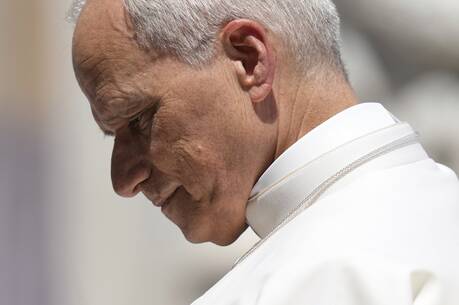A Reflection for the Memorial of Saint Teresa of Jesus, Virgin and Doctor of the Church
Find today’s readings here.
A few years ago, a reader of America Magazine approached my coworker Molly Cahill and complimented her on the scripture reflections she edits and sends to your email inbox every morning. “I enjoy reading the reflections,” she said, “But I love to read the ones by the women of America most of all.”
When I saw that today was the feast of St. Teresa of Ávila, one of the four female Doctors of the Church, I was reminded of this encounter. I remembered that women may be unnumbered in the ranks of the Church and outnumbered in the history of the Church, yet they (we!) provide insightful commentary to religious spaces.
St. Teresa of Jesus, also known as St. Teresa of Ávila, reformed the Carmelites in the 1500s, going on to found the Discalced Carmelites, who rejected other Carmelites’ lax observance of cloister, who received guests and often had superfluous conversations. St. Teresa’s discalced nuns and friars, on the other hand, lived in extreme poverty and rejected property—they also, per their name, wore sandals or no shoes at all.
Against the wishes of non-reformed Carmelites and even prosecuted by the Spanish Inquisition (I’m sure no one expected that!), St. Teresa nonetheless continued to live a life of prayer and seclusion, writing mystic works such as “The Interior Castle,” in which she described the ideal journey of faith as seven successive chambers in a castle, with the last being union with God.
She explains that this central or uppermost place is hard to see from the first chambers, which one must enter first—and they are filled with temptations and other beasts sent by the devil (2.15). These first rooms can only be traversed by means of prayer and meditation, understanding oneself in order to understand God better. The second set of rooms are focused on the practice of prayer, and so on. (I recommend picking up the book, even just to meditate on a paragraph or two. It gets deep quickly!)
St. Teresa of Ávila is the Doctor of Prayer, with good reason; she inspired countless other saints with her mysticism and her focus on the soul’s ascent to God, including St. Francis de Sales and St. Alphonsius Liguori, fellow doctors of the Church; and St. Teresa Benedicta of the Cross, a fellow Carmelite.
She was a mystic of the first order: Jesus appeared to her bodily, an angel pierced her heart, she levitated. Even her books are difficult to grasp and require time to absorb their contents.
Her Interior Castle was written for her fellow Carmelite sisters as a guide to prayer—of course anyone can read it, but I find it beautiful that this woman in the 16th century wrote something for women that has become so meaningful to the Church even hundreds of years later. Let us continue to be inspired by the insights of women, including and especially saints like St. Teresa of Ávila.








